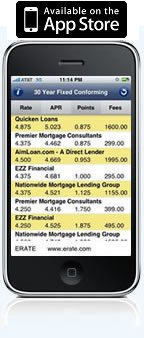Deposit Accounts : Understanding Bonds
by Amy Lillard
(3/10/2013) When determining a place to set aside money and watch it grow over time, bonds are truly unique.
Buying a bond is basically lending money to a corporation or other entity. This organization pays you interest for the loan. In bond lingo, the interest rate provided is a “coupon,” and the due date for repayment is called the “maturity date.” Along the way, bonds pay out regular interest payments to holders, providing a fairly steady income stream.
A bond is considered a security, along with stocks. There’s an important distinction here. Bonds are debt, and by purchasing one an investor becomes a creditor to the organization. Stocks are equity, and investors are considered owners with rights to vote and to future profits. In a worst-case scenario of an organization failing and claiming bankruptcy, bondholders have higher claims on assets than shareholders and will get paid first. This makes bonds less risky by comparison, but with potentially lower return.
A bond is a fixed-income security, which means you have a fairly certain idea how much you will receive after the term is complete. Individuals who can’t take the chance of losing their money, or need money for a specific purpose in the relatively near future, are often advised to invest in bonds rather than stocks.
That doesn’t mean that bond values don’t fluctuate. In fact, value and price can go up and down every day. But if you keep a bond until maturity, you are promised a set rate of return. Ultimate yields are in part determined by the type of bond you buy:
• U.S. Government Bonds. These bonds are issued by the U.S. Treasury or other federal government agencies. In exchange for higher level of safety, yields are typically slightly lower than other bonds. This type of investment from the government has different names depending on the term, but all work the same way:
- Bills — maturing in less than one year
- Notes — maturing in one to 10 years
- Bonds — maturing in 10 years or more
• Municipal bonds. These bonds are issued by cities, state and other local government organizations. As such, returns are tax-free. Although promised interest rates may look lower than other bonds, their tax benefits may end up providing better yields.
• Corporate bonds. Issued by corporations of all sizes and industries, these bonds vary in risk and return accordingly.
• High-yield bonds. Often called “junk bonds,” these invest in the debt of new or smaller untested companies, as well as larger companies in a weakened financial state. These are the highest risk companies, and for that you are offered higher rates of return (up to 10 percent more than other bonds).
For Additional Reading:
Udnerstanding Bonds:
http://www.kiplinger.com/article/investing/T052-C000-S001-understanding-bonds.html
Other related articles:
Deposit Accounts: Beyond Savings, Beginning Investing
Deposit Accounts: CD Laddering
Deposit Accounts: 5 Tips to Build Your Savings
Deposit Accounts: Understanding Checking Accounts
Deposit Accounts: Types of CDs
Deposit Accounts: Understanding Money Market Accounts
Deposit Accounts: Understanding Certificates of Deposit
Deposit Accounts: Types of Savings Accounts
When Shopping for a Savings Account, Don't Forget About Credit Unions
Combat the Weak Dollar With Smart Savings
Don't Let Low Rates Scare You Away fromSaving
Look Online to Kick Off Your Savings the Right Way
Save Money Using a Money Market Account
Americans Now Have More Options for Retirement Savings
Do Yourself a Huge Favor: Save 10%
Fannie Mae & Jumbo Mortgage Rates
Just One Click! = Current Rate Chart

Start by selecting your state

Amy Lillard
The ERATE® Resource Guide to No-Closing-Cost Refinancing
Principal Reduction: New Programs, More Controversy
Understanding Mortgages: Mortgage Paperwork
Understanding Mortgages: Types of Mortgages
Understanding Mortgages: How to Get a Mortgage
Understanding Mortgages: Buy or Rent?
Understanding Mortgages: Working with a Real Estate Agent
Understanding Mortgages: Working with a Real Estate Agent
Refinancing: Selecting a Loan

- Mortgage Program Options
- Interest Only Mortgage
- 100% Mortgage Financing - No Down Payment
- Mortgage Rates Comparison
- Search for Mortgage Rates
- No Costs Mortgage Refinancing
- 2% Rule - Refinancing Mortgage
- Yield Spread Premium
- Prepayment Penalty - Mortgage Refinancing
- What is APR and how is it calculated?
- Private Mortgage Insurance - Refinancing
Moving Ahead With Your Refinance
Get the Updated and Improved Mortgage Rates App from ERATE.com
FREE Mortgage Rate WidgetsYour State's Rates or National Rates Get this Widget for any State you want


